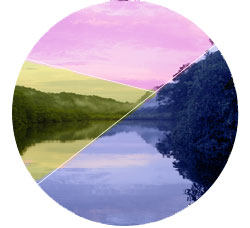ARCS OF LIFE
 We promote the conservation of the country natural ecosystems as a legacy for future generations, strengthening the care of the natural habitat of thousands of plants, insects, reptiles, mammals, birds and amphibians essential for the planet.
We promote the conservation of the country natural ecosystems as a legacy for future generations, strengthening the care of the natural habitat of thousands of plants, insects, reptiles, mammals, birds and amphibians essential for the planet.
FUNDAECO, together with communities, municipalities and government institutions, works in the administration and conservation of Guatemalan representative ecosystems.
FUNDAECO’s main methodology is the design of protected areas created as land management instruments for biodiversity protection and sustainable production of environmental goods and services.
Each protected area is designed with eco-regional criteria, including complete functional ecosystems (basins, sets of gradients, mountain sea corridors, etc.) and including a zoning for its diversified management: Core Zones, Multiple Use Zones, Forest Zones, Ecotourism Zone and Public Use, and Buffer Zones, among others.
FUNDAECO works co-managing or supporting the management of protected areas declared by the Congress of the Republic, Parks and Municipality Reserves, Community Reserves and Private Reserves. Our main partners for this program are the Protected Area National Council (CONAP, by its initials in Spanish), the Center of Preservationist Studies (CECON, by its initials in Spanish), the Forest National Institute (INAB, by its initials in Spanish), local communities and municipalities.
Field Intervention Models from the Program “Arcs of Life”
- Support to the design, creation and management of National Protected Areas in high biodiversity sites
- Creation of an Institutional Network of Ecological Reserves in unique sites and ecological high value
- Support to the establishment of Municipal Regional Parks in priority sites in Guatemala with lack of conservation
- Assistance in the establishment of Community and Indigenous Natural Reserves with support of Conservation Agreements
- Conservation Guatemalan AZE Sites of Amphibians
- Investigation and Biological Monitoring for the conservation of species and ecosystems









